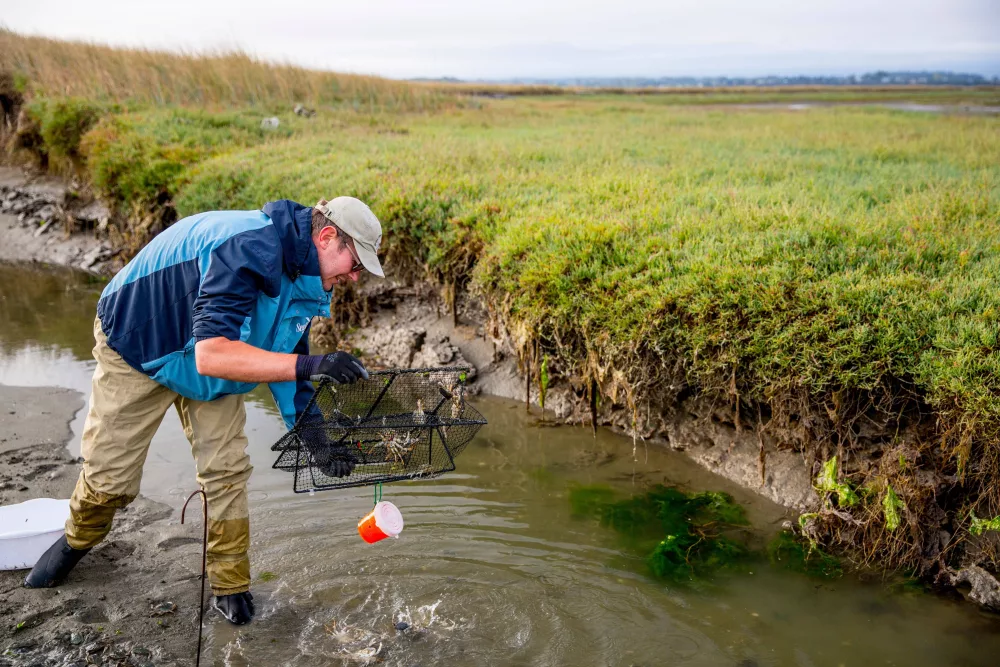
Seattle – Washington State will soon have another tool to support long-term management for one of the highest priority invasive species, European green crab, thanks to state funding dedicated to genetic research.
Last fall, Washington Sea Grant received $185,000 in state appropriations to work with Washington Department of Fish and Wildlife and Woods Hole Oceanographic Institution to sequence the European green crab genome. That work is underway.
The European green crab, an invasive species that has had severe impacts on the East Coast shellfish industry and can harm important eelgrass and estuary habitats, is a top management priority for F&W.
First detected in Washington’s inland waters in 2016, extensive, widespread monitoring projects were launched, including here in Clallam County. As of 2024, European green crab infestations have been found along much of Washington’s Pacific coast as well as in smaller, localized detections in the Salish Sea and along the Strait of Juan De Fuca, including in Sequim Bay and Discovery Bay.
Numbers are far more concerning in the waters of Cape Flattery, Grays Harbor, Mason County, Willapa Bay and, perhaps worst of all, in the tidewaters of the Lummi Nation Reservation.
Existing genetics research indicates that all the European green crab along the Pacific coast originated from a single introduction event to San Francisco Bay from the northeastern United States.
Mapping the genome of the European green crab will provide crucial information such as how genes play a role in enabling green crabs to adapt to so many environments including changing water temperatures along the Pacific coast. Knowing which genes influence key traits in green crabs could give some insight on their long-term management.
(University of Washington College of the Environment photo: Washington Sea Grant Marine Ecologist Jeff Adams monitoring for European green crab.)
